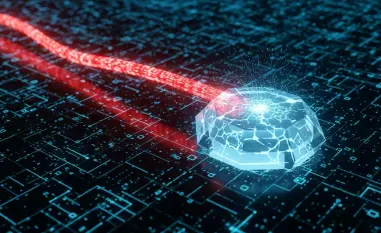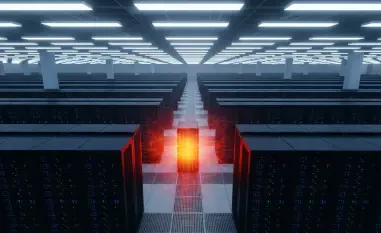In the face of an ever-evolving threat landscape, Malik Haidar stands as a fortress of knowledge in cybersecurity, diligently protecting against malicious actors in multinational enterprises. With expertise in analytics, intelligence, and integrating business acumen into cybersecurity strategies, Malik offers deep insights into the complex world of cyber threats. Today, he shares his thoughts on the recent exploits targeting Cisco Identity Services Engine vulnerabilities, providing a clearer understanding and guidance on tackling such issues.
What prompted Cisco to release a warning about the critical vulnerabilities in their Identity Services Engine (ISE) and ISE Passive Identity Connector (ISE-PIC)?
Cisco was alerted to vulnerabilities that could allow remote, unauthenticated attackers to execute arbitrary code with root privileges. The potential for severe exploitation of these vulnerabilities necessitated an immediate warning to mitigate any potential damages.
Can you explain the nature and potential impact of the vulnerabilities CVE-2025-20281, CVE-2025-20282, and CVE-2025-20337?
These vulnerabilities center around inadequate validation processes. They allow attackers to execute arbitrary commands by exploiting API and file upload capabilities. The impact is critical, with attackers potentially gaining complete control over affected systems.
What are the root causes of these vulnerabilities, and how do they enable attackers to execute arbitrary code?
The core issue lies in insufficient validation of user inputs within specific APIs. This inadequacy allows malicious parties to craft requests or files that can exploit system privileges, ultimately leading to arbitrary code execution with root access.
How have these vulnerabilities been exploited by hackers so far?
Exploitation has involved executing crafted API requests and uploading malicious files. Although specifics of these attempts were not disclosed by Cisco, the exposure indicates active targeting by threat actors.
Why are the vulnerabilities CVE-2025-20281 and CVE-2025-20337 considered to be equally severe?
Both vulnerabilities allow similar levels of unauthorized access through flaw exploitation in API validation. Their potential impact on system integrity and security is why they are deemed equally severe.
How does Cisco recommend customers address and remediate these vulnerabilities in their systems?
Cisco strongly urges upgrading to fixed software releases to address these vulnerabilities. Such updates are critical in closing the door on potential exploits and ensuring security patches are applied.
What are the specific software version updates provided by Cisco to fix these vulnerabilities?
Cisco released updates in ISE and ISE-PIC versions 3.3 Patch 7 and 3.4 Patch 2, addressing these issues comprehensively. These patches aim to rectify the vulnerabilities and prevent future exploitation.
Are there any versions of Cisco ISE and ISE-PIC that are not affected by these vulnerabilities?
Yes, versions 3.2 and earlier do not suffer from these specific vulnerabilities, as the issues were identified in versions 3.3 and 3.4.
How did Cisco become aware of the attempted exploitation of these vulnerabilities in the wild?
The Cisco Product Security Incident Response Team (PSIRT) observed exploit attempts, which catalyzed their updated advisory and reinforced recommendations for customer system updates.
How did Trend Micro Zero Day Initiative contribute to reporting the security defects?
Trend Micro Zero Day Initiative played an integral role by identifying vulnerabilities through their proactive approach to potential security risks, collaborating with Cisco for timely disclosure and patching.
Why is it essential for customers who previously installed ISE version 3.3 Patch 6 to update to the latest patches?
Installing the latest patches ensures the closure of all known vulnerabilities, including those unaddressed by earlier hot patches, thereby safeguarding systems against emerging threats.
Can you highlight any challenges that might arise during the patching process for the affected systems?
Patching often comes with challenges like compatibility issues and downtime. Meticulous testing and staging in non-production environments are crucial for mitigating these challenges effectively.
Why has Cisco chosen not to release details about the observed exploitation attempts?
Keeping specifics about exploitation attempts undisclosed minimizes the risk of giving threat actors additional insights into their tactics and strategies, a common practice to bolster security.
What additional steps, besides patching, can organizations take to protect themselves from such vulnerabilities?
Organizations should employ continuous monitoring, enforce strict access controls, and utilize robust security practices, such as frequent employee training and incident response planning.
How does Cisco handle security vulnerabilities in their products compared to other major tech companies?
Cisco demonstrates a proactive approach by issuing timely patches and advisories, collaborating with initiatives like the Trend Micro Zero Day Initiative akin to industry best practices for swift action.
How significant is the impact of such vulnerabilities on Cisco’s reputation and customer trust?
While vulnerabilities present challenges to reputation and trust, Cisco’s quick response and transparent communication can reinforce customer confidence by showcasing their commitment to security.
How can Cisco’s response to these vulnerabilities set an example for handling similar situations in the cybersecurity industry?
Cisco’s prompt patching, clear advisories, and active collaboration with security initiatives depict a robust response model, setting a benchmark for accountability and proactive threat management.
Do you have any advice for our readers?
Stay vigilant, educate your teams, and always prioritize applying the latest security patches. Cybersecurity isn’t just a field—it’s a mindset, where constant learning and adaptation are key to resilience.













